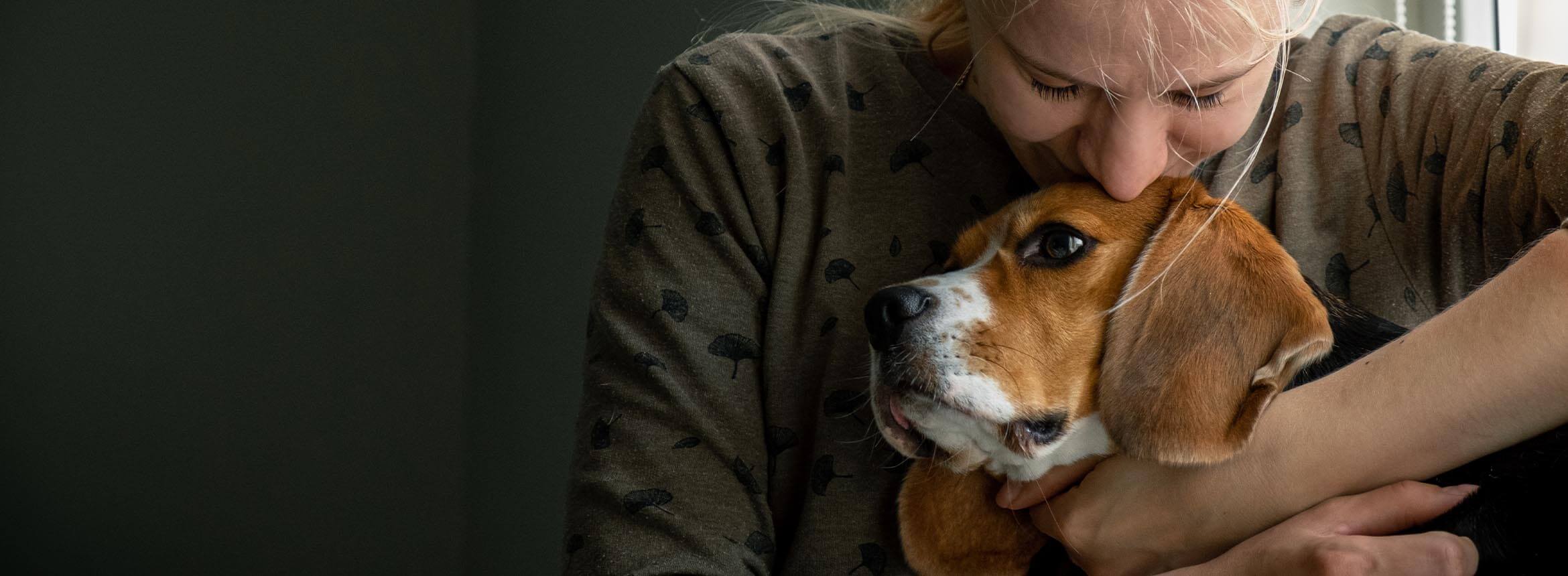No Pet Parent wants to hear their beloved pal has cancer. If you do get the tough news, hang in there! A cancer diagnosis can be scary, but there are ways to navigate this difficult time and get your pet the best possible care.
1. Take a moment and process the news.
It’s normal to be emotional when your pal gets diagnosed. Even though it’s serious, remember that pet cancer is not uncommon. One in four dogs will develop cancer in their lifetime, according to the American Veterinary Medical Association (the rate is lower for felines). It may be hard to fathom, but try not to panic. There are many resources available to you for support.
2. Talk to your veterinarian, ask questions, and learn.
Ask your vet as many questions as you need to, so you understand your pet’s condition and what to expect. Ask about the type of cancer your pet has, the stage, and what symptoms to watch out for. The amount of information to take in might be overwhelming — if possible, bring someone along who can take notes and remind you of questions to ask.
3. Avoid searching the web, if you can.
Try not to go online for examples of other pets with the same condition — every dog or cat responds differently to illness and treatment, and the anecdotes may do more harm than good.
4. Make an appointment with a veterinary oncologist.
A vet oncologist specializes in treating pets with cancer and can help you determine your pet’s prognosis and treatment options. Websites like the Veterinary Cancer Society can help you find a board-certified oncologist in your area.
5. Get familiar with the treatment options available.
Cancer treatments depend on many variables, including the type of cancer your pet has, how advanced it is, the location of the cancer cells, and your pal’s age. Surgery, chemotherapy, radiation, and palliative care (among others) are all options for treatment. Work with your vet oncologist to discuss the side effects, success rates, and quality of life for your pet to determine the best course of action.
6. Break down the costs of treatment — including time, money, and quality of life.
Many times, cancer can be treated in several different ways. It’s likely you’ll have a few options to think through. When deciding on how to move forward, you’ll want to focus on what’s best for your furry friend’s well-being and consider these important questions:
- How much will each phase of treatment cost, and can my family afford it?
- Will pet insurance offset some of the costs?
- How much time will be spent traveling to and from treatment appointments?
- Is the treatment what’s best for my pet’s long-term quality of life?
These considerations will play a role as you figure out next steps. Don’t hesitate to talk things through with your vet so they can help you come to a decision.
7. Keep calm (and carry on) with your pal’s routine.
Our pets thrive on their daily routine, so try to keep it as normal as possible in between vet visits if your pal is feeling up to it. Exercise, play, and a healthy diet are important to keep both you and your buddy active and healthy.
8. Gather your support network.
Your family and your pets don’t have to face a cancer diagnosis alone! There are many types of support available to you:
- Reach out to friends and family members for a little TLC, or to come along for vet appointments.
- Ask your vet about local support groups for parents of pets with cancer.
- Find an online support group to join.
- Explore financing options from CareCredit or research groups offering financial assistance for pets with cancer.
9. Remember, you are in the driver’s seat with treatment.
If at any time you feel your pal isn’t responding well or have any concerns about how things are going, you have the option to pause treatment or pivot to a different strategy. Don’t be afraid to discuss things with your vet and vet oncologist; it’s part of being a good advocate for your pet!
10. Stay hopeful and stay grounded.
There will be good days and bad days during cancer treatment. There may be times when you’re encouraged or frustrated, optimistic, or very worried. Try to keep a positive mindset with realistic expectations for your pet’s progress. And remember — your buddy’s medical team will be doing everything they can to help the four-legged family member you love.

